14 of 20 Eshima Ohashi Bridge (Japan)
If you are a fan of rollercoasters, you might like this Japanese bridge. It may not be as steep as it appears with a 6.1 percent gradient and being 144 feet high, we still wouldn’t grab the chance to drive up nor down that thing. Built between 1997 and 2004, this bridge is the largest Japanese rigid-frame bridge and in the world, it is the third largest.
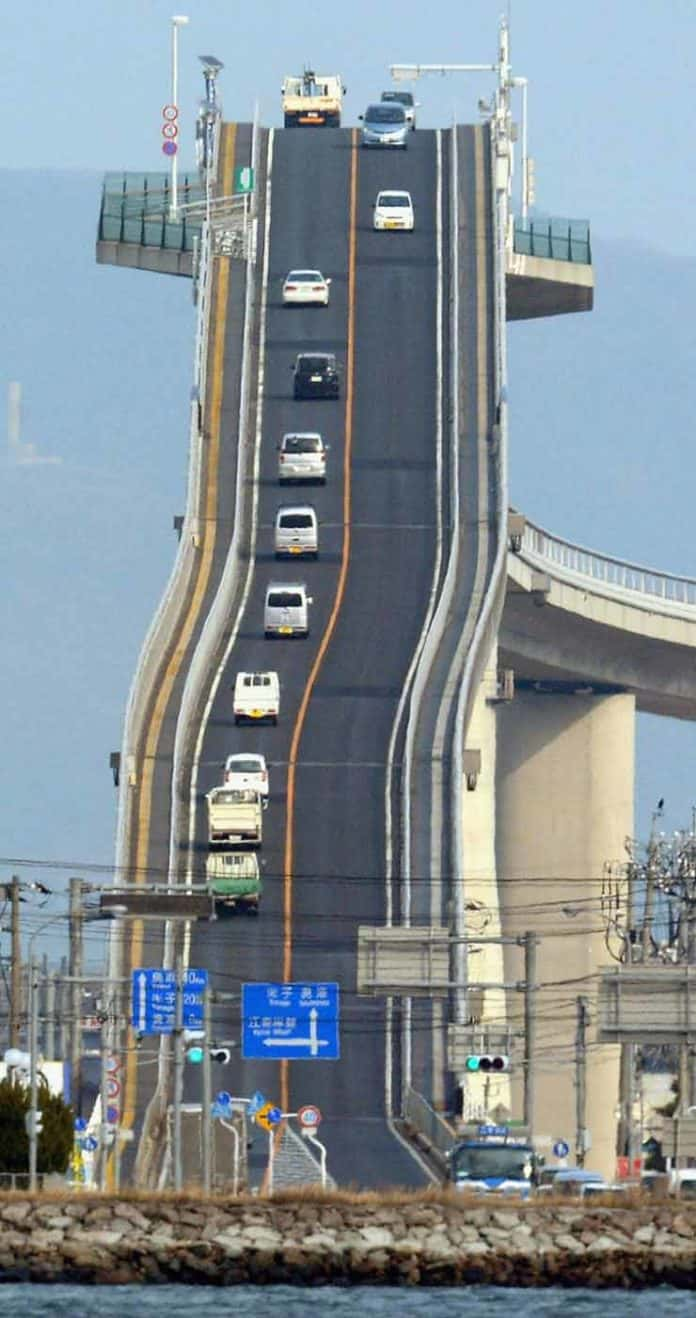
Eshima Ohashi Bridge (Japan)
The Bridge of Immortals (Huang Shang, China)
If you’re scared of heights, then you may want to avoid this bridge as it is situated between a pair of giant granite peaks in Huangshan (AKA Yellow Mountain) in eastern China. However, if you’re a dare devil, you might hear this bridge calling you to cross its path. It offers a spectacular view of the mountains, but we imagine it is even scarier on the way to the bridge. The Yellow Mountain is definitely a dream destination for an adventure thrillist.
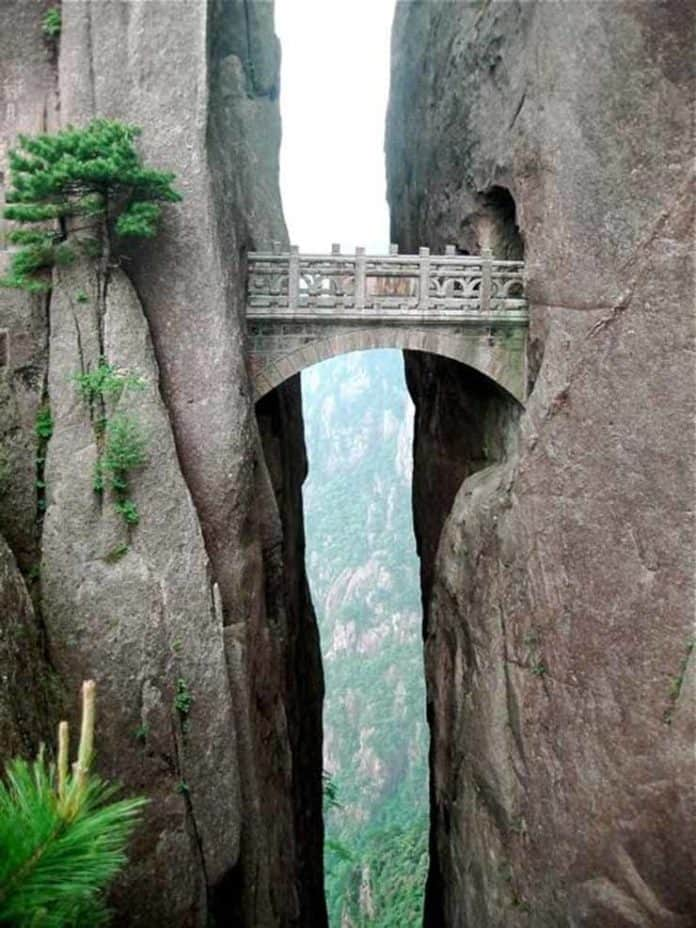
The Bridge of Immortals (Huang Shang, China)
Montenegro Rainforest (Costa Rica)
This beautiful and serene walk through the trees can be done in one of the most eclectic rainforests in the world. Visitors get a chance to get up close with the rainforest in Costa Rica when they cross these hanging bridges. However, if you decide to experience this for yourself, don’t get too distracted by the beautiful landscape and remember to look down. The bridge has some missing planks, so if you don’t want to end up on the forest floor, be careful and watch your step.

Montenegro Rainforest (Costa Rica)
U Bein Bridge (Myanmar)
You might think this bridge is undergoing renovation, but it actually always appears like this. Constructed in 1850, the U Bein Bridge in Myanmar is 1.2 kilometers in length and crosses the Taungthaman Lake. In addition, it is said to be the world’s oldest teakwood bridge and has turned into a tourist attraction because of its length of 1 kilometer and the way its pillars jut out of the water. The bridge definitely has heavy traffic from both locals and tourists, so souvenir sellers use this opportunity to sell souvenirs.
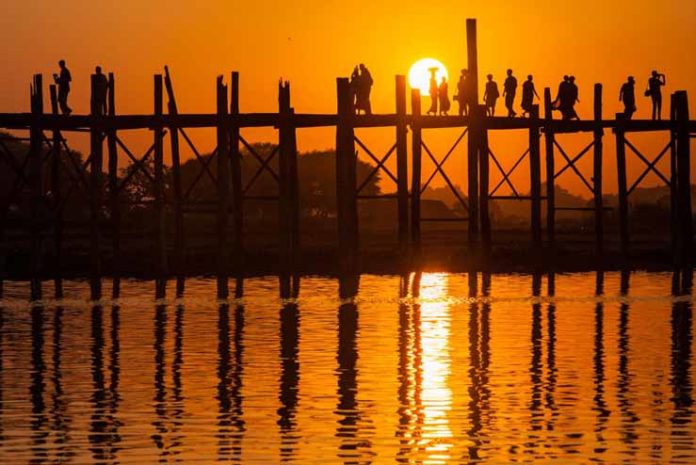
U Bein Bridge (Myanmar)
Storseisundet Bridge (Norway)
With the gorgeous backdrop of mountains, this road is quite spectacular but also a little nauseating. This bridge has been called “the road to nowhere.” However, it is among the official national tourist routes in the country. If you like the stomach drop feeling that roller coasters give, you will most likely enjoy this bridge.
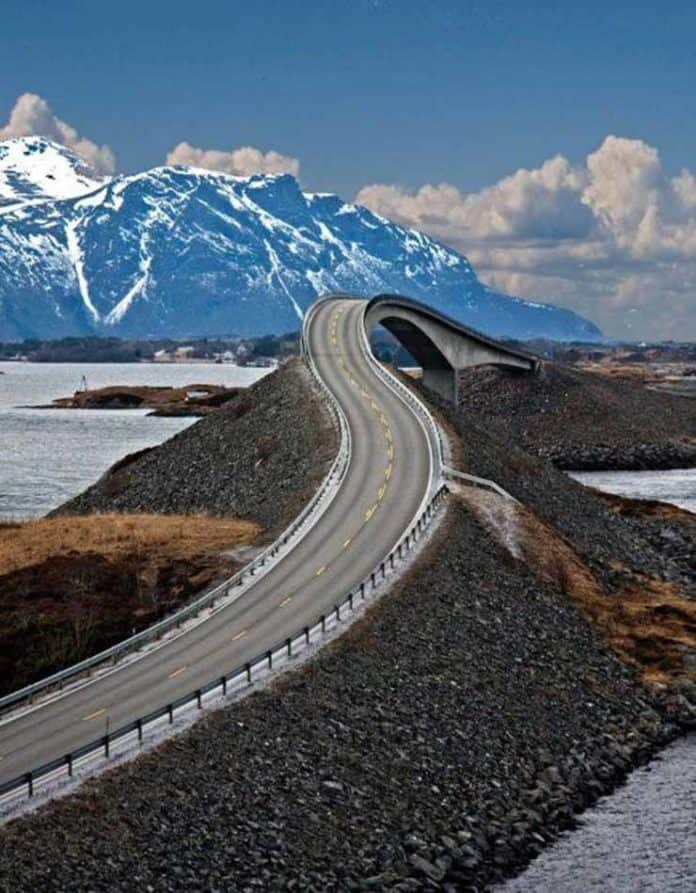
Storseisundet Bridge (Norway)
Carrick-a-Rede Rope Bridge (Northern Ireland)
Some people who had wanted to see the picturesque island located on the other side and had decided to take this 66-foot-long bridge got so frightened by it that they opted to ride a ferry going back instead. We can’t really blame them seeing as this bridge is positioned 30 meters above the water and rugged rocks. What’s more, you need to pay a toll for crossing this bridge. Apparently, not a lot of people in Ireland would like to pay to be scared.

Carrick-a-Rede Rope Bridge (Northern Ireland)
Sidu River Bridge (China)
China’s Sidu River Bridge is currently the world’s highest bridge. Built in 2009, this steel bridge cost $100 million to construct, hangs above the canyon floor at a nauseating 1,600 feet, and has a length of 4,009 feet crossing the river valley. Part of the ongoing highway expansion project of China, the bridge connects two parts of the country which were previously inaccessible due to several rivers and mountainous terrain. It offers truly staggering views of the valley below and fortunately, it is said to be among the sturdiest bridges built in history – and for everyone’s sake, we hope this is true.
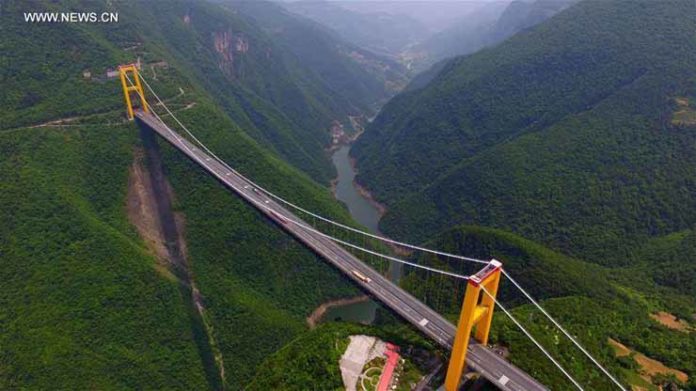
Sidu River Bridge (China)
Mekong River Crossing (China)
The Mekong River is an enormous river that stretches across six countries in Asia – China, Myanmar, Thailand, Laos, Cambodia, and Vietnam. The condition of the river water can fluctuate from raging rapids to calm. This photo shows a man using the wires to get across the river with extremely choppy waters. Crossing our fingers that he is great at slack-lining because if not, he will be in deep waters, quite literally.
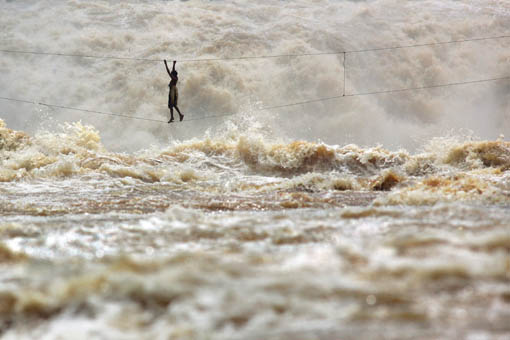
Mekong River Crossing (China)
Millau Viaduct (France)
The Millau Viaduct is Europe’s largest cable-stayed bridge and the world’s tallest bridge as it stands at a towering height of 1,125 feet and is 105 feet wide and over 8,000 feet long. It crosses the gorge in Tarn in Southern France and it was constructed from 2001 until 2004. Because of potential winds with the highest possible speed of 151 kilometers per hour, they installed side screens to reduce the wind’s effect by 50%. Back in 2006, the International Association for Bridge and Structural Engineering gave the Outstanding Structure Award to the Millau Viaduct.
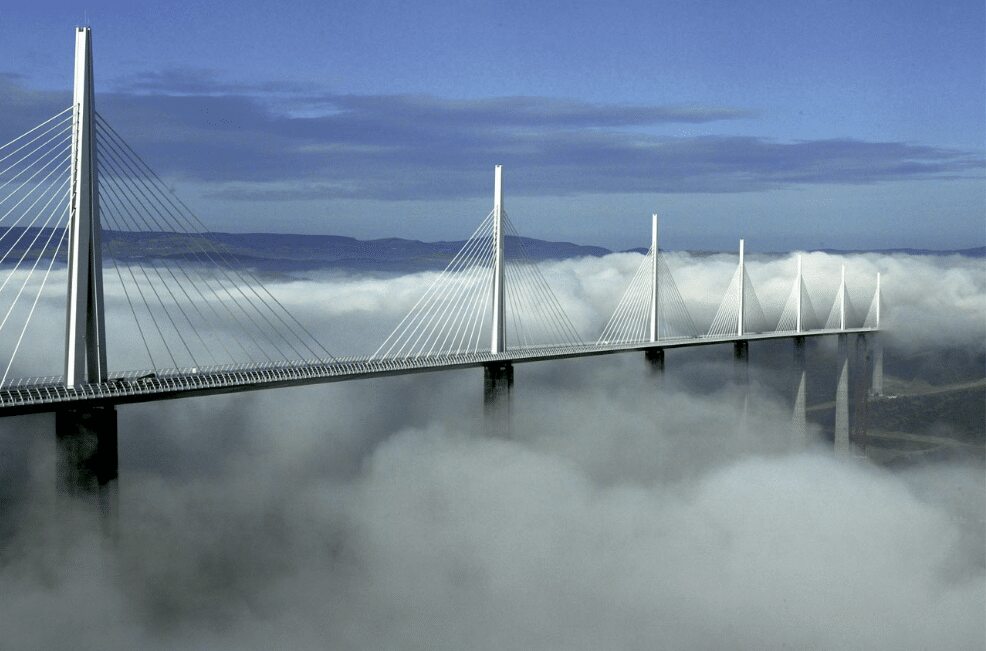
Millau Viaduct (France)
Iya Kazurabashi Bridge (Japan)
In this picture, it’s clear to see that everyone is holding on to the Iya Kazurabashi bridge which dates back to the 1300s. It is located in the Iya Valley and sits above the river of Iya-gawa in Tokushima, Japan. This bridge has wooden planks connected to each other with mountain vines. Historically, it is very significant, but perhaps the safety in renovations and modernization needs to be considered, so cross it at your own risk and just make sure that you hold on tight.

Iya Kazurabashi Bridge (Japan)
Mystery Bridge (Indonesia)
We’re not even sure why anyone is crossing this bridge seeing as it’s hanging on its side and it looks like it’s about to give up on life. This bridge seems to be a distant relative of the ‘Indo Board,’ a device used by skateboarders and surfers to develop balance. Basically, they try to balance a board without wheels on a foam cylinder while making sure they don’t touch the floor. In comparison, professional ‘indo-boarders’ wouldn’t really fare well on this Indonesian bridge.
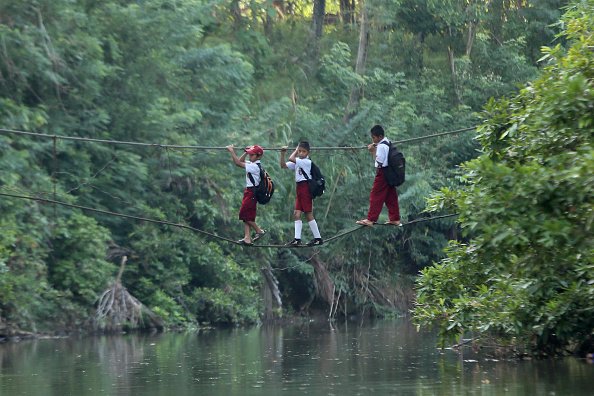
Mystery Bridge (Indonesia)
Trift Bridge (Switzerland)
Located near Gadmen in the Swiss Alps, the beauty of this bridge is apparent to everyone – those who are afraid of heights and those who are not. It is suspended at 558 feet over Switzerland’s glaciers and 328 feet above sea level. This bridge was constructed back in 2004, but struggled with upholding really windy conditions. Fortunately, stabilizing cables were added in 2009 in order to ensure safer conditions for the brave and daring souls who decide to cross the bridge.
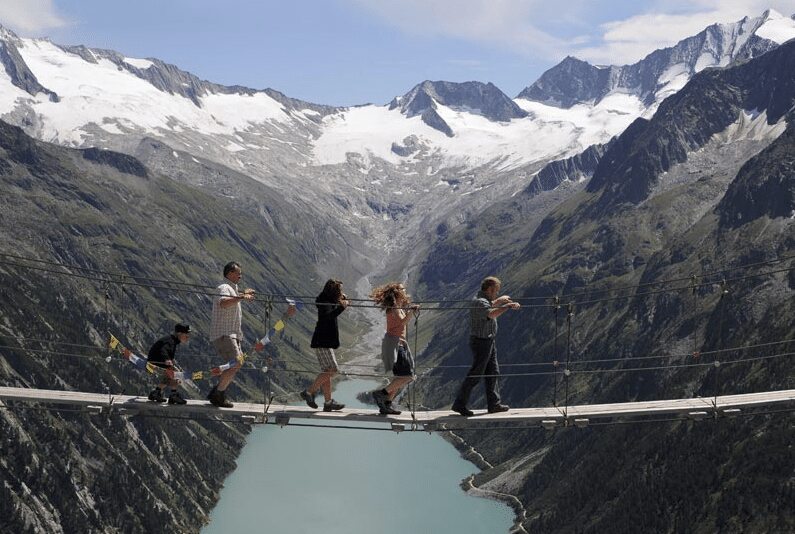
Trift Bridge (Switzerland)
Hanging Bridge Of Ghasa (Nepal)
Similar to a lot of crossings in Nepal, this hanging bridge is used by humans and animals. They have been using this bridge for decades in spite of its questionability under windy and rainy conditions. Every day, cattle and donkeys travel across this bridge that is hanging very high above the river valley. Fortunately, there are high side rails that protect those people brave enough to cross the bridge.
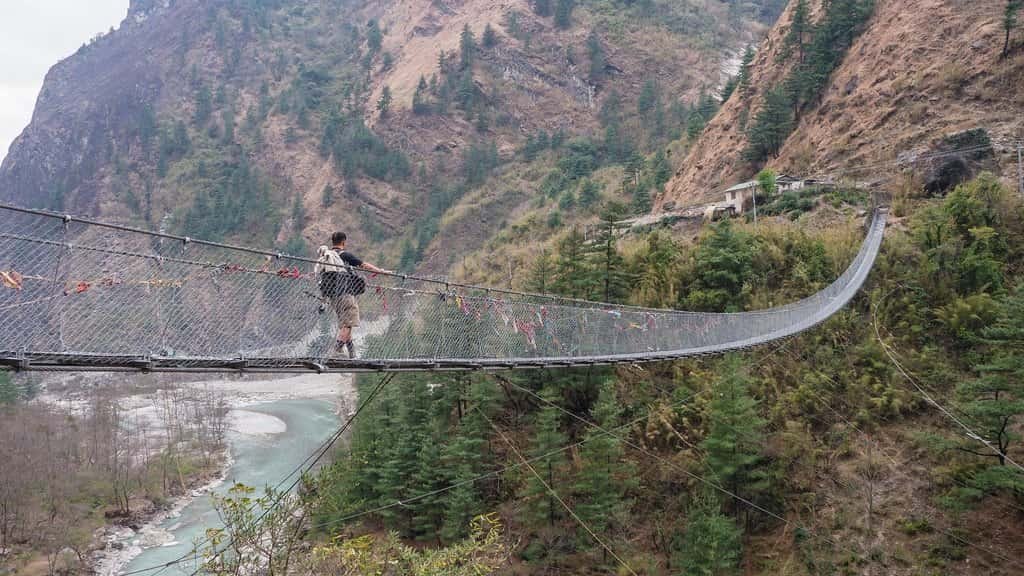
Hanging Bridge Of Ghasa (Nepal)
U Bein Bridge (Myanmar)
Built in 1850, the U Bein Bridge stretches for about three fourth of a mile over the Taungthaman Lake. It is made from teak, a tropical hardwood tree and is really dangerous since there aren’t any side rails and there isn’t anything to hold on to when you walk across. What’s more, falling is not the only thing you’ll have to worry about because in recent years, the bridge has become a crime hotspot as well. Policemen are now guarding the bridge to protect passersby and tourists.
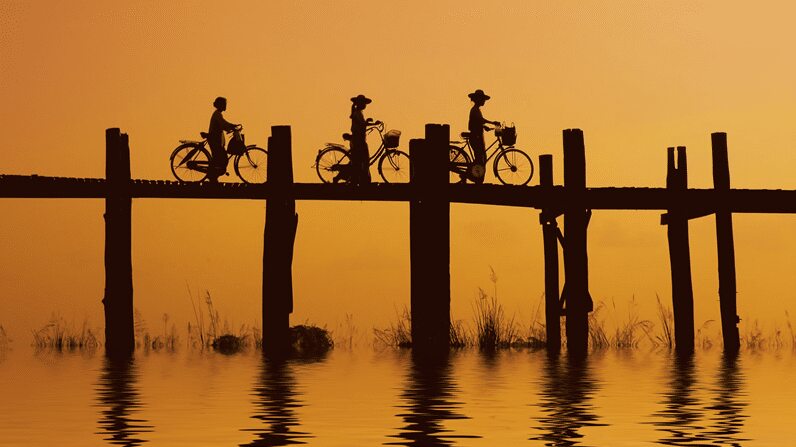
U Bein Bridge (Myanmar)
Root Bridges (India)
These bridges can teach the world a thing or two because they were not actually built but grown from material that is found in nature. The bridges were “constructed” using the tangled roots of a tree found in the Khasi and Jaintia Hills called Ficus elastica, a rubber tree that produces secondary roots higher up its trunk. The tribes of War-Khasis and War-Jaintias, who are closely related, learned to guide the roots and vines of the trees to the right direction to use them to create the spectacular pathways and bridges through the forest and over rivers.
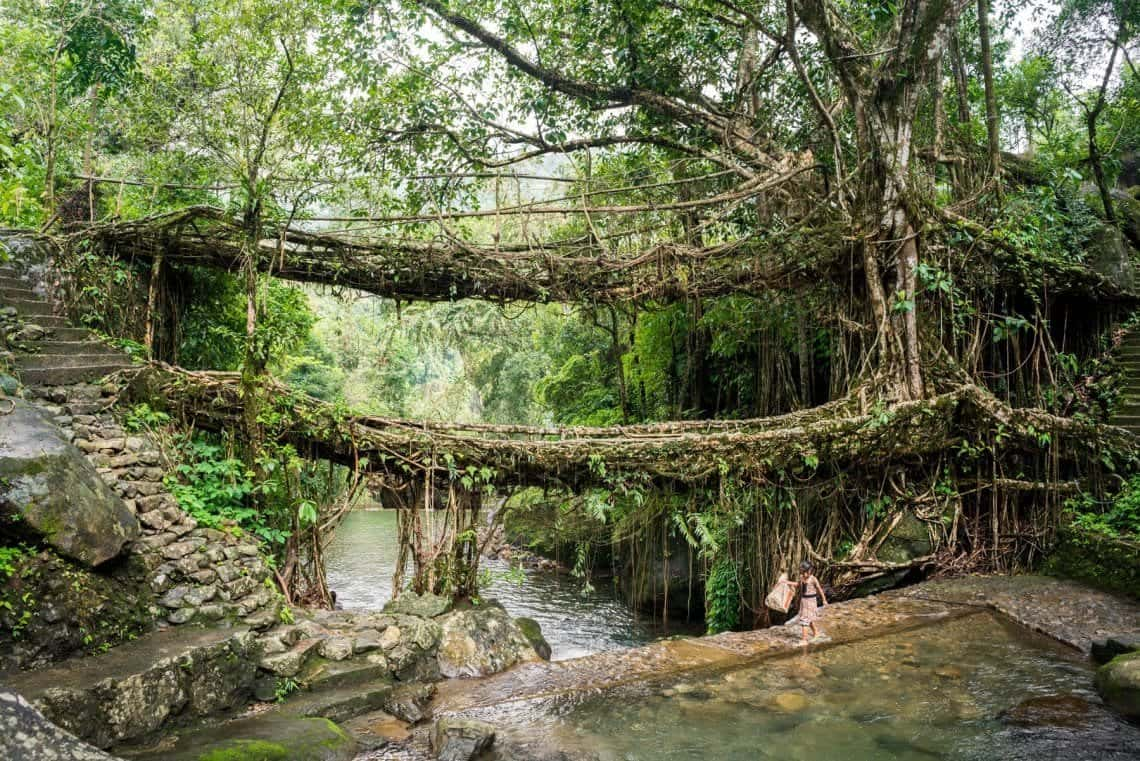
Root Bridges (India)
Taman Negara Canopy Walkway (Malaysia)
The Taman Negra Canopy Walkway is the longest of its kind, stretching over 1,700 feet, and hangs 130 feet above the ground. This bridge has become one of the top tourist attractions in Malaysia. Cross the walkway only if you feel super brave and try not to look down.
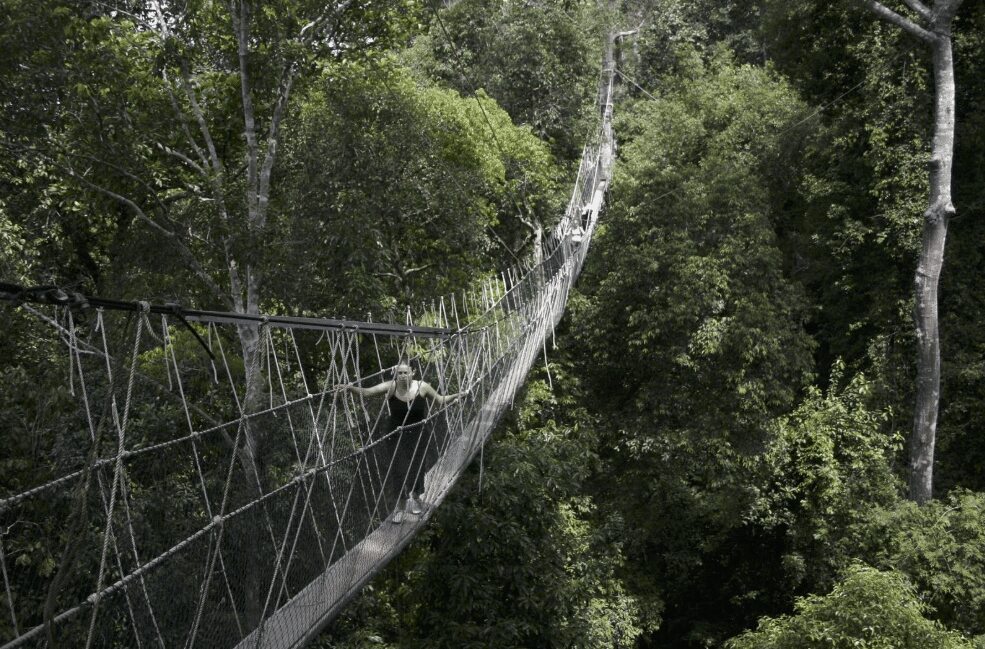
Taman Negara Canopy Walkway (Malaysia)
Keshwa Chaca Bridge (Peru)
If you guessed that this bridge is made of woven grass, then you are right. However, if you are questioning its reliability, you don’t actually need to since it has stood the test of time, having been built by the Incas 500 years ago. A lot of work went into the construction of this bridge and many people were involved, like the women who first had to braid smaller, thinner ropes and the men who then used the small ropes to braid larger support cables. Known for being the last structure from Incan engineering, the Keshwa Chaca Bridge is quite impressive for holding out through the many years.
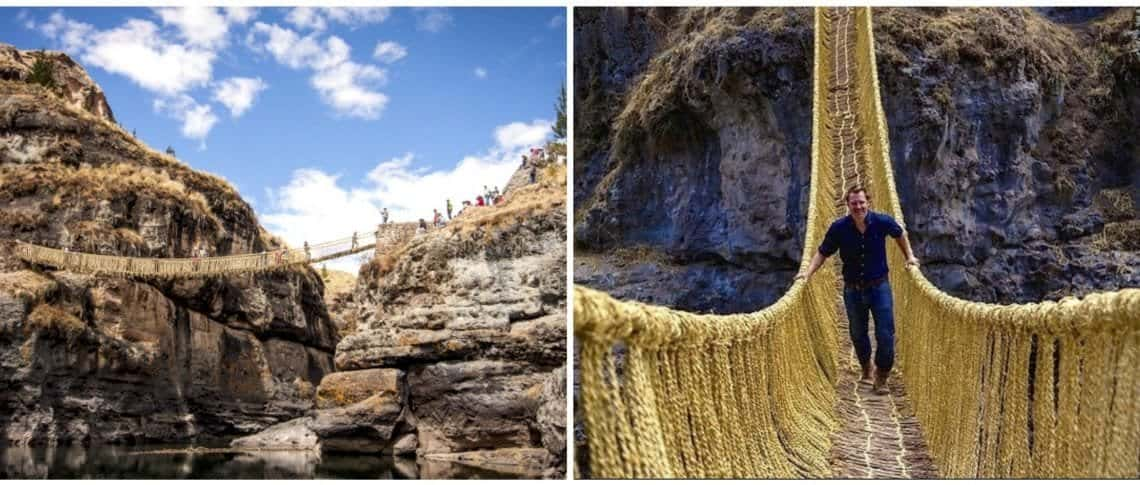
Keshwa Chaca Bridge (Peru)
Longjiang Suspension Bridge (China)
Also known as the Long River Bridge, the Longjiang Suspension Bridge can be found outside of the city of Baoshan and connects Baoshan to the city of Tengchong in west Yunnan. The highest and tallest suspension bridge in Asia, its construction was very intricate and was only completed in 2016, after five years. Stretching over 3,900 feet and suspended 920 feet above the river, it is among the world’s longest and tallest bridges. Before it was constructed, locals needed to take a detour of 8.4 miles to get to Tengchong from Baishan – what an inconvenience!
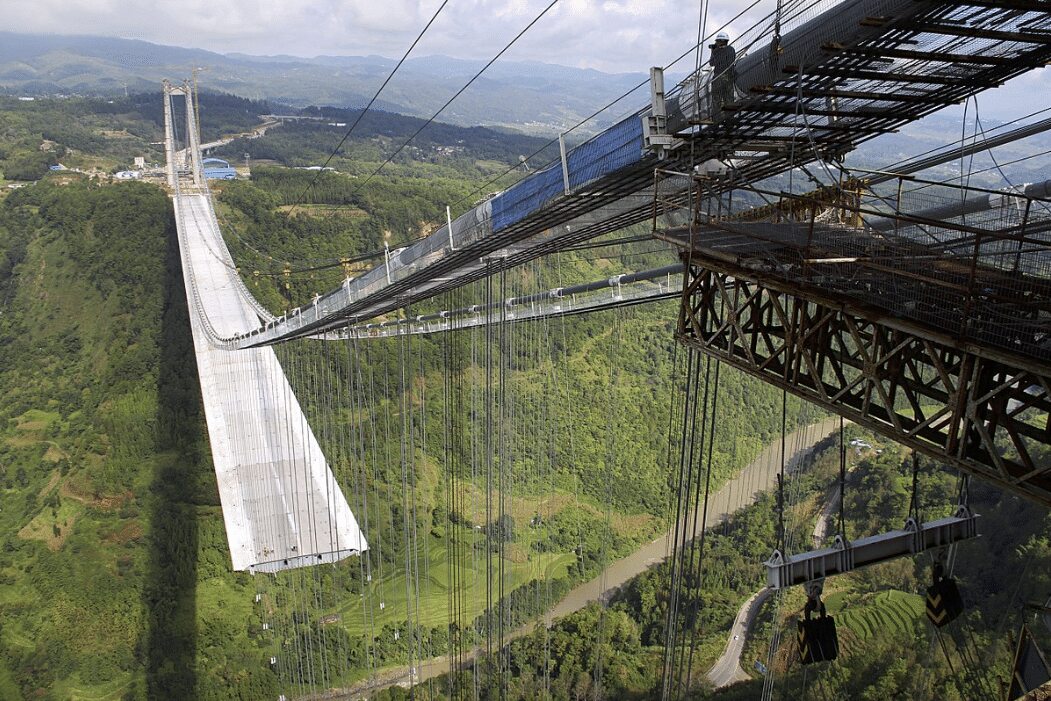
Longjiang Suspension Bridge (China)
Capilano Suspension Bridge (Canada)
The Capilano Suspension Bridge sits 230 feet above the waters of the Capilano River in Northern Vancouver. Stretching 460 feet, the bridge gets approximately 800,000 visitors in a year, which isn’t really surprising given the area it is located in. It was originally built in 1889 by the Scottish civil engineer George Grant Mackay and was sold twice before Rae Mitchell bought and renovated the entire bridge during the mid-1950s. Fun fact: this bridge has been the setting of episodes of different T.V. series, such as MacGyver, The Crow: Stairway to Heaven, Sliders, and Psych.
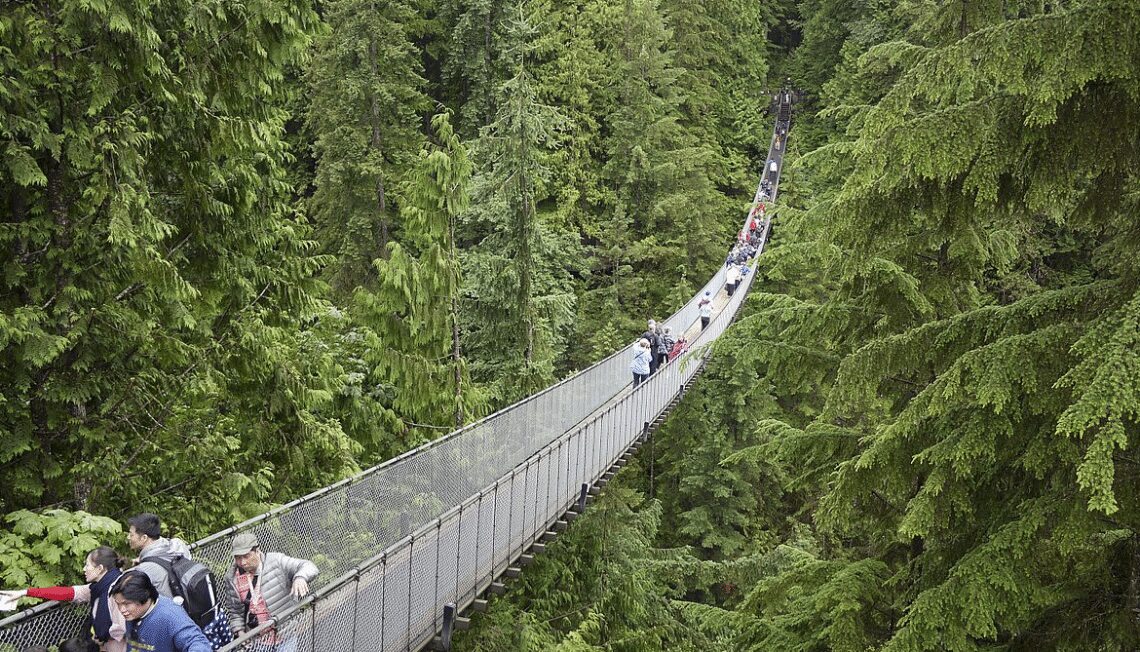
Capilano Suspension Bridge (Canada)
Ai Petri Bridge (Ukraine)
With amazing views all around, this bridge sits high up in Ukraine’s mountains and crosses over a canyon that is 4,200 feet deep. It connects two of the many peaks of the Crimean Mountains. The bridge actually gets plenty of fog and wind because of the area it is situated in. Even on quite a calm day, you should be careful when crossing over the gigantic canyon because the bridge still has the tendency to shake as you walk across it.

Ai Petri Bridge (Ukraine)
